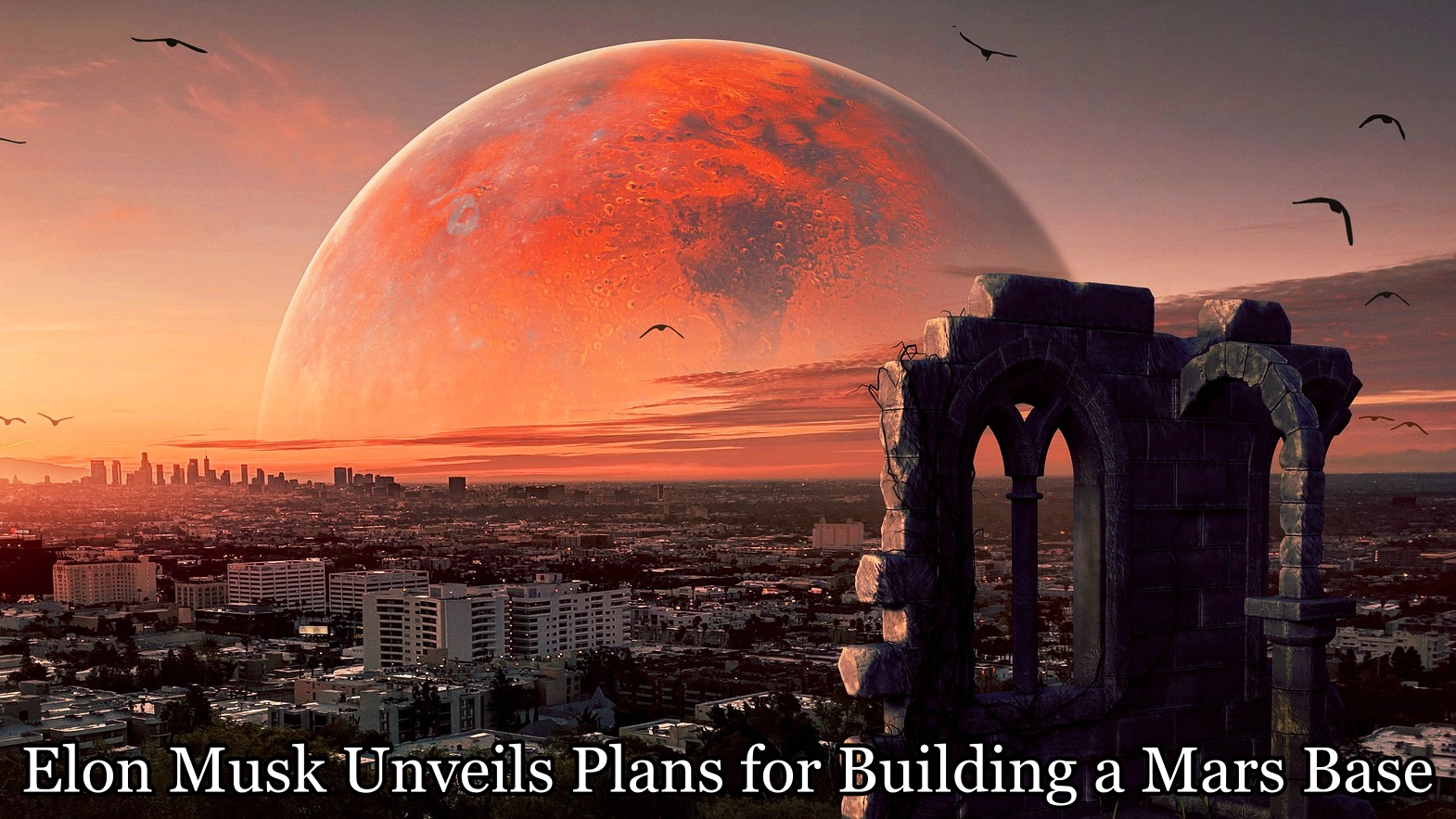Mars has become the ultimate goal for humanity’s future beyond the Moon, captivating the ambitions of major space organizations around the world. Establishing a permanent base on Mars isn’t just an option anymore—it’s a necessity. In the race to make this dream a reality, SpaceX stands at the forefront, with its Mars Base Alpha concept becoming one of the leading contenders.
Let’s take a closer look at this ambitious project and why it could mark the next giant leap for humanity.
What is Mars Base Alpha?
Mars Base Alpha is SpaceX’s bold plan to create humanity’s first permanent settlement on Mars. It will serve as a foundation for future expansion, playing a critical role in sustaining long-term human life on the red planet. At the heart of this vision is SpaceX’s Starship, a revolutionary spacecraft designed to transport both people and cargo to Mars.
The Importance of Mars Base Alpha
Mars Base Alpha is crucial for establishing fuel and energy production systems, enabling humans to survive on Mars long-term. It will ensure the production of oxygen, fuel, and other vital resources needed for human survival. With Mars’s abundant carbon dioxide and water ice, this project will be key in sustaining future Mars missions.

The Construction Plan for Mars Base Alpha
Phase 1: Robotic Exploration
The initial phase of Mars Base Alpha’s construction will heavily rely on robotic systems. SpaceX will send at least two Starship cargo missions to pre-selected locations on Mars, strategically chosen for their proximity to water ice reserves and ideal altitudes to maximize solar energy efficiency.
Human Presence: Starship and Future Crews
Once the initial infrastructure is in place, human missions will follow. Teams of 10 to 20 astronauts will land on Mars, living inside the Starship spacecraft during the base’s construction. The Starship’s spacious interior, with about 1,100 cubic meters of habitable space, will provide a comfortable living environment during the early stages.
Advanced Technologies for Base Construction
3D Printing and Resource Utilization
One of the most exciting technological advancements in this endeavor is 3D printing. This will allow astronauts to rapidly construct essential components for the base. Using in-situ resource utilization, SpaceX will convert Mars’s resources—such as water ice and CO2—into liquid methane and liquid oxygen for fuel production.
A Self-Sustaining Martian City
As Mars Base Alpha expands, it will become a self-sustaining city, capable of producing its own energy, fuel, and food. The base will gradually evolve, with specialized habitat modules designed to shield from radiation and dust, ensuring astronauts’ safety.
Timeline: When Will Mars Base Alpha Become a Reality?
The first uncrewed Starship mission to Mars could launch between late 2026 and early 2027, according to Elon Musk. With rapid advancements in Starship development, such as successful Super Heavy booster landings, SpaceX is positioning itself to reach Mars faster than ever before. Crewed missions to Mars are expected to begin around 2028 or 2029, with a goal to have the base operational by 2030.
Competition in the Space Race
SpaceX vs. China: The Mars Battle
The race to establish a human presence on Mars is intensifying, especially with China’s growing space ambitions. The country is working towards a Mars sample return mission, set to launch in 2028, which could give China a competitive edge in the space race.
However, SpaceX’s Starship has a significant advantage: its ability to transport large quantities of Martian material, unlike traditional spacecraft that can only carry limited sample amounts. This capacity, paired with its ability to deliver cargo and crew, puts SpaceX in a strong position to establish the first human base on Mars.
The Moon as a Launchpad for Mars
Before we establish a base on Mars, NASA and SpaceX’s focus will first be on the Moon. NASA’s Artemis Program aims to send astronauts to the Moon, particularly to its South Pole, where water ice reserves may support human life and fuel production. This will lay the groundwork for later Martian expeditions, with SpaceX’s Starship playing a key role in these missions.
Europe’s Role: The Ariane 6 Rocket
Across the Atlantic, Europe’s space agency is preparing for the Ariane 6 rocket‘s first commercial mission. While the Ariane 6 faces technical challenges, it marks a significant milestone in Europe’s space capabilities and highlights the international nature of space exploration.
Conclusion: A New Era of Space Exploration
The competition for Mars colonization is heating up, with SpaceX leading the charge to establish a permanent human presence on the red planet. The vision of Mars Base Alpha is no longer a distant dream but an achievable goal. With technological advancements and a strategic approach to resource utilization, SpaceX could make history by achieving human settlement on Mars within the next decade.
What do you think? Will SpaceX lead the way to Mars, or will another nation take the lead? Share your thoughts in the comments below.
FAQ
Mars Base Alpha is SpaceX’s ambitious plan to establish humanity’s first permanent settlement on Mars. It will serve as a foundation for future expansion, enabling long-term human presence on the red planet.
Mars Base Alpha will be crucial for developing essential infrastructure such as energy and fuel production systems. It will allow humans to survive on Mars and sustain future missions, marking a significant milestone in the colonization of other planets.
SpaceX will first send uncrewed Starship cargo missions to Mars to deliver supplies. Then, robotic systems will scout and extract resources. When human missions arrive, astronauts will begin assembling the base, producing fuel, and utilizing 3D printing technologies for construction.
SpaceX’s Starship is the key vehicle for transporting people and cargo to Mars. It will be used to deliver materials and crew to the Martian surface, playing an essential role in establishing and maintaining Mars Base Alpha.
The first uncrewed Starship mission to Mars is expected to occur between late 2026 and early 2027. Crewed missions could begin as soon as 2028 or 2029, with Mars Base Alpha becoming operational by 2030.
Before the base is operational, astronauts will live inside the Starship spacecraft, which provides approximately 1,100 cubic meters of habitable space. This will allow astronauts to work and live comfortably during the early stages of base construction.
3D printing technology will be used for rapid on-site construction, and in-situ resource utilization will help produce fuel and oxygen using Mars’s carbon dioxide and water ice. This will be crucial for sustaining human life and reducing dependency on Earth-based supplies.
Water ice on Mars is essential for producing vital resources such as oxygen for breathing, fuel for Starship missions, and water for astronauts. It is a key component for enabling long-term human survival on the red planet.
Some challenges include ensuring the safe landing and transportation of supplies, developing effective radiation shielding, dust mitigation systems, and overcoming technological limitations in spacecraft and energy production.
China is rapidly advancing its Mars exploration program, with plans to send missions to collect Martian samples and establish its own presence on Mars. However, SpaceX’s Starship gives the U.S. a unique advantage, allowing for large-scale transport of materials and the potential to establish the first human base on Mars.
Read More:


I am fully behind a detailed and transparent mission to build and maintain a comprehensive lunar base first, and then after proving the technologies practical on the moon, Mars. However, unfortunately, what I see from SpaceX thus far is more hype than solid engineering and planning. With these missions supposedly so close on the tine line, they do not share how they will solve their biggest challenge. And that is minimizing exposure to cosmic radiation both during the voyage to Mars, and specifically how to protect crews while constructing bases and afterwards. Where is the data to demonstrate Starship itself provides sufficient shielding? A trip to the moon is quick. Not to Mars. Propositioned equipment for both the moon and mars can use regolith and soil to provide sufficient protection initially but it needs to be at least several meters to be effective. Is see no credible discussion of this from an engineering or scientific point of view. Quoting the volume of starship is meaningless unless one explains how using it will provide effective protection from radiation. Burying it could work. Is that the plan? Looking for real engineering details. Not simply artist renderings not tied to reality.